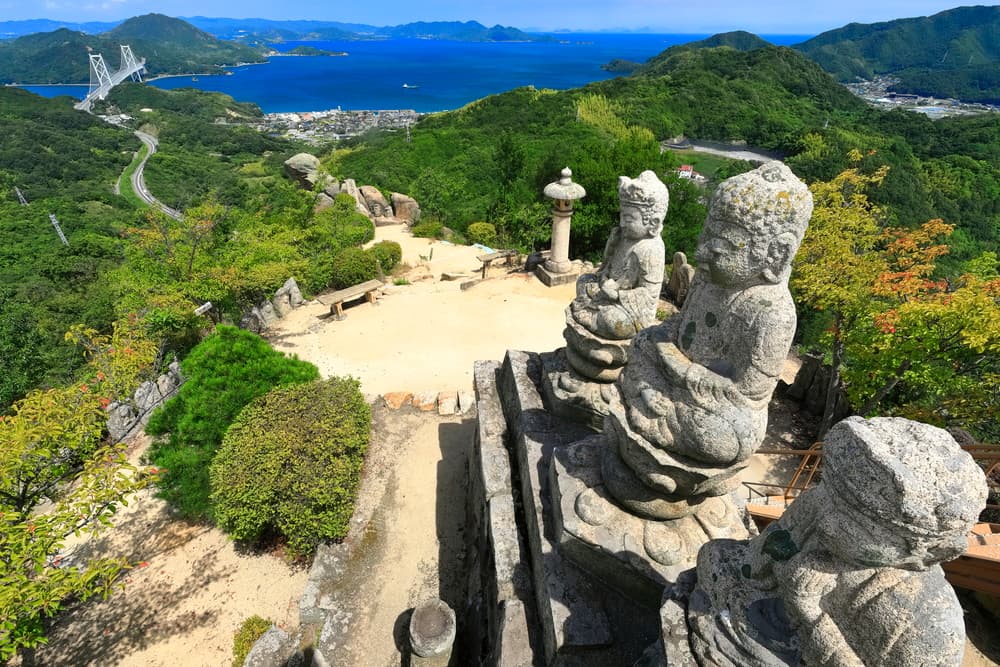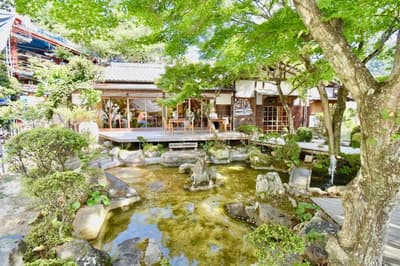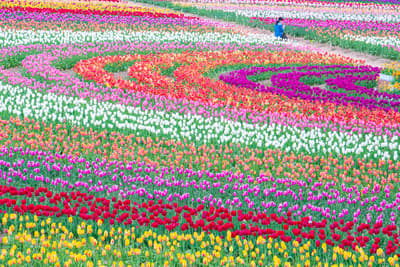Hiroshima is filled with many attractions that you should not miss. In this article, we have carefully selected the things to do and places to visit that you should not miss when visiting Hiroshima. From historical spots, to gastronomic experiences unique to Hiroshima, to the sacred sites of anime productions set in Hiroshima Prefecture, we offer the best guide to make your trip to Hiroshima a fulfilling one! We hope you will visit these spots and experience firsthand the deep charm of Hiroshima and its history.
Click here to learn more about Hiroshima
Visit World Heritage Sites
Itsukushima Shrine (嚴島神社)
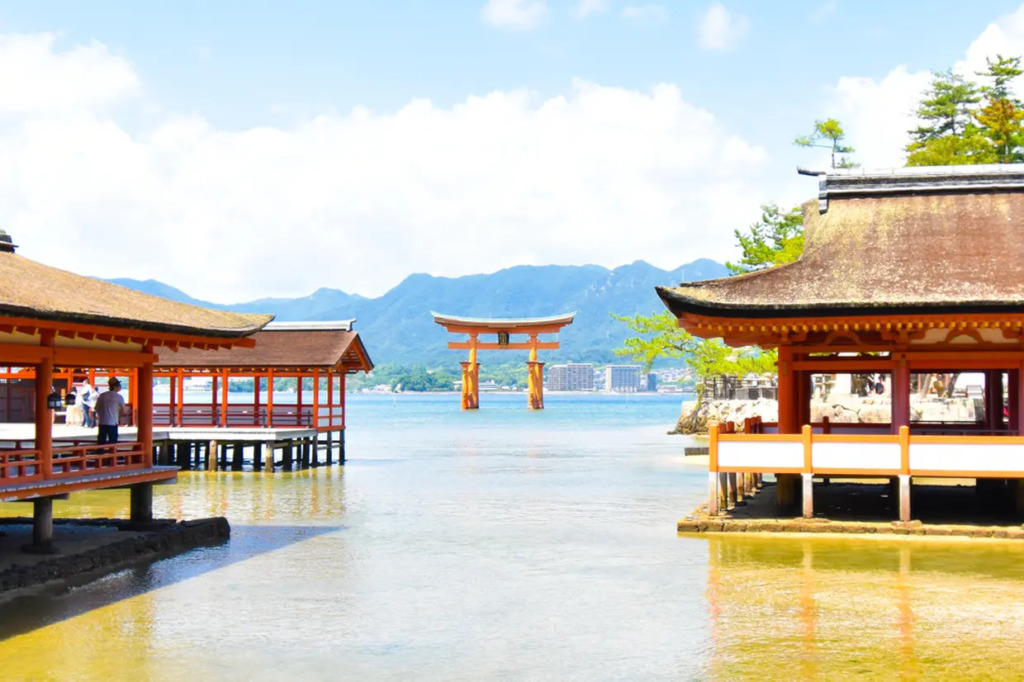
Hiroshima Prefecture has two World Heritage sites. They are Itsukushima Shrine and the Atomic Bomb Dome, both popular tourist attractions. Both were registered as World Heritage sites in 1996. Both the Atomic Bomb Dome, located in the center of Hiroshima City, which emphasizes the importance of peace and human rights, and Itsukushima Shrine, which boasts a mystical maritime shrine on Miyajima, have their own unique stories and important histories that deeply impress visitors. We invite you to visit these magnificent World Heritage sites that symbolize the culture and history of Hiroshima.
Atomic Bomb Dome (原爆ドーム)
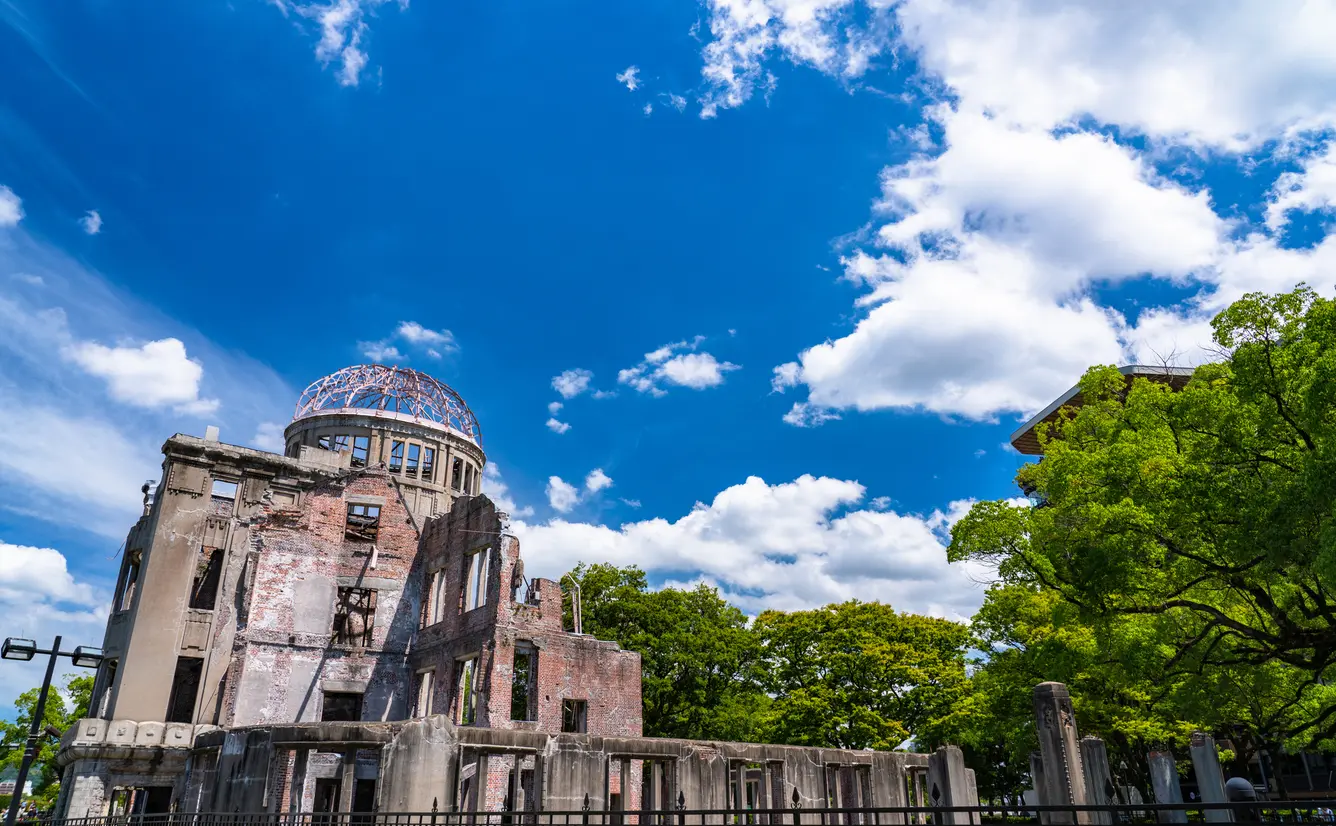
Learn History and Culture at the Museum
Shinshoji Zen Museum and Gardens (神勝寺禅と庭のミュージアム)
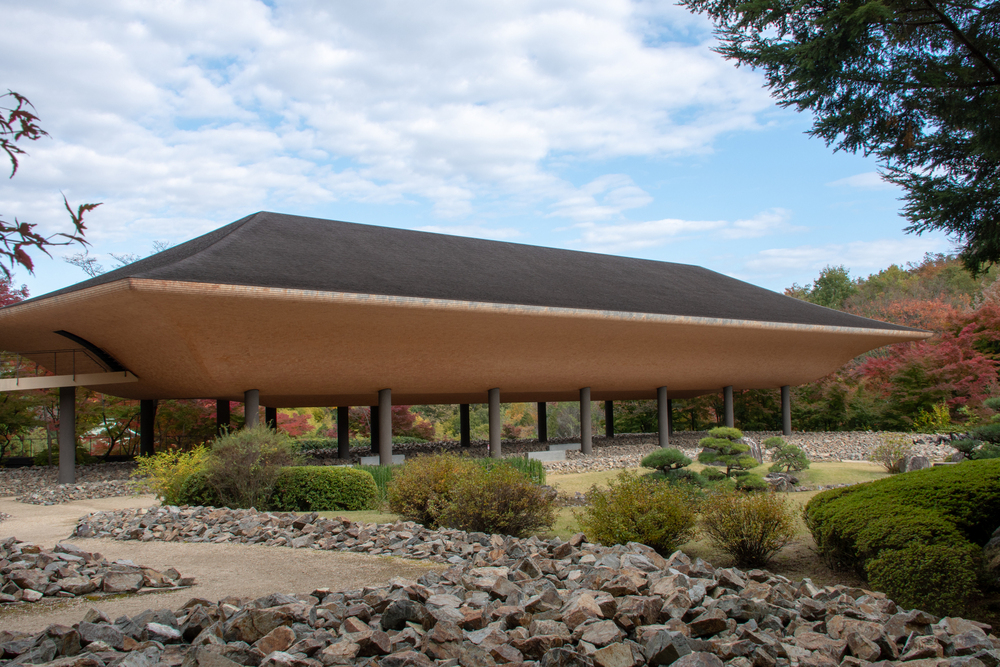
Shinshoji Zen Museum and Gardens is a place where visitors can experience what Zen is all about through a variety of experiences. The spacious grounds are dotted with tea rooms, shrine offices, and a garden that connects the buildings. The museum’s permanent collection of approximately 200 Zen paintings and calligraphic works, one of the finest in Japan, is on display throughout the year in a permanent exhibition hall that changes exhibits as needed, and the entire grounds are used as a museum.
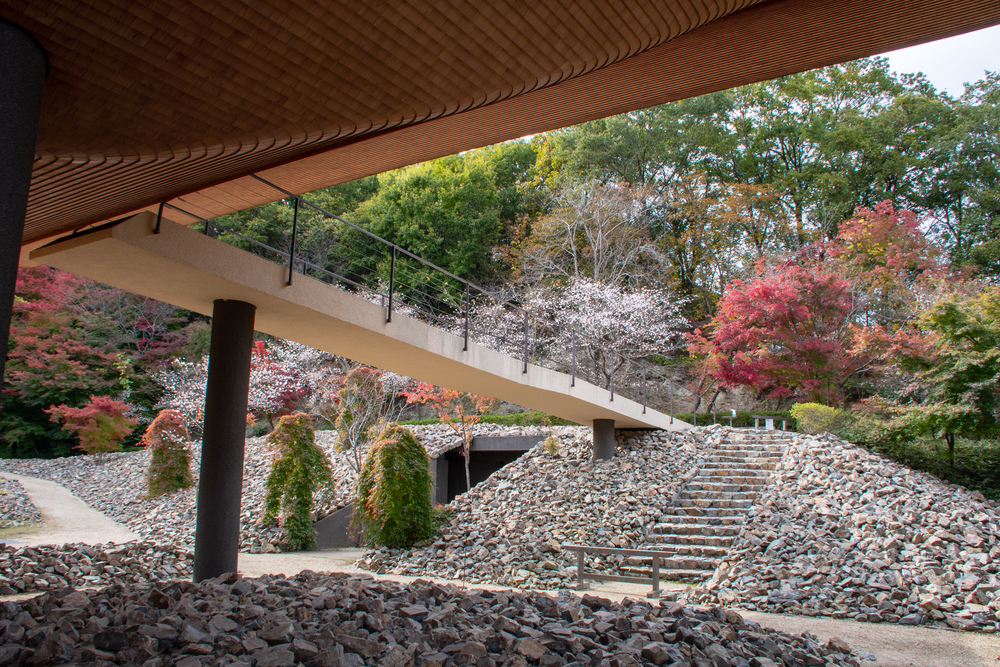
There is a restaurant and café on the temple grounds, where you can enjoy Shinshoji temple udon noodles, sencha sets, and matcha green tea. The temple also offers one-day Zen experiences and overnight Zen experiences, so if you are interested in experiencing the world of Zen, we invite you to do so.
*Reservations are required for the experience. Check the official website for details!
Official website: https://szmg.jp/en/
Yamato Museum (大和ミュージアム)

The city of Kure in Hiroshima Prefecture built Japan’s most famous battleship, the Yamato. The town faces the sea, and a military port was located there before the war. This museum has exhibits filled with the history of Kure as a port town, and visitors can learn about the science and technology related to shipbuilding and steel. The huge replica of the battleship Yamato is a must-see, and is so large that it will amaze not only children but adults as well.
Visit the Film Locations of Japanese Animations
Did you know that there are several anime films set in Hiroshima Prefecture? We invite you to see the scenery and atmosphere you have seen on the screen in real locations!
Ponyo (崖の上のポニョ) – Tomonoura, Fukuyama City
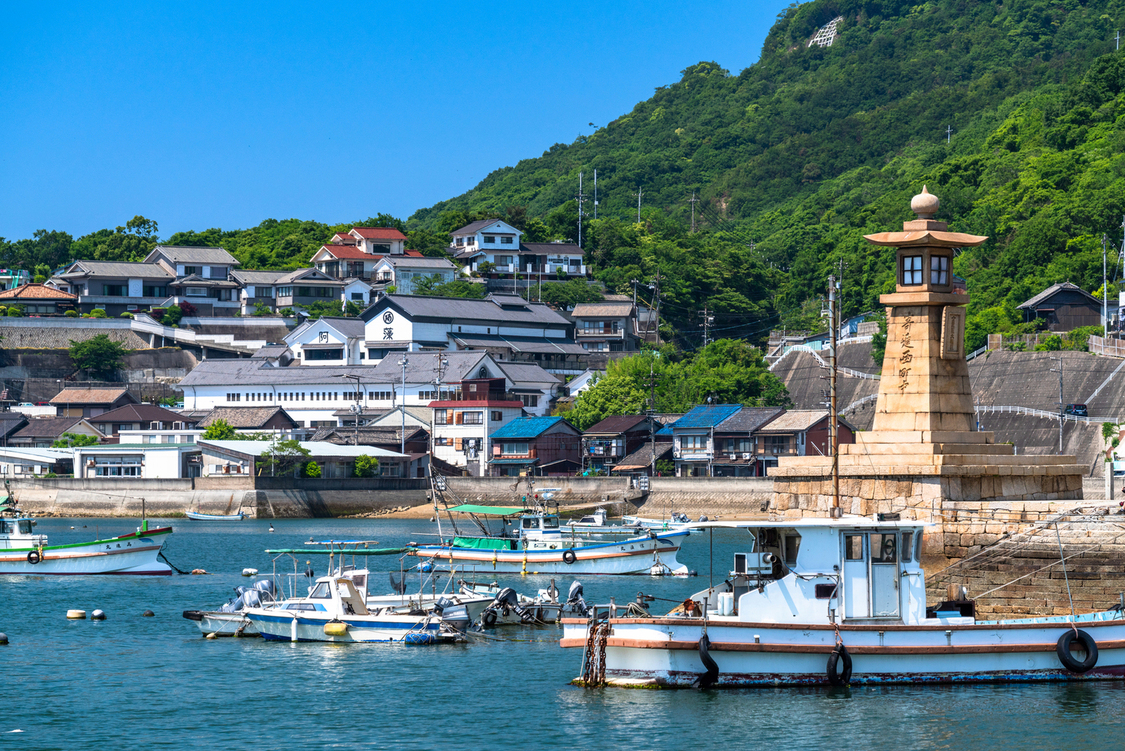
Tomonoura, located in Fukuyama City, is a retro port town that has long developed as a major port that plays a central role in the Japanese economy. Traditional townhouses and historical facilities built in the Edo period still remain in Tomonoura, and the old townscape was the setting for the Ghibli movie “Ponyo”. Although it is a small area, Tomonoura has been selected as a national Important Preservation District for Groups of Traditional Buildings. Please take a stroll through the streets and enjoy the scenery of the movie while thinking about the scenes from the movie.
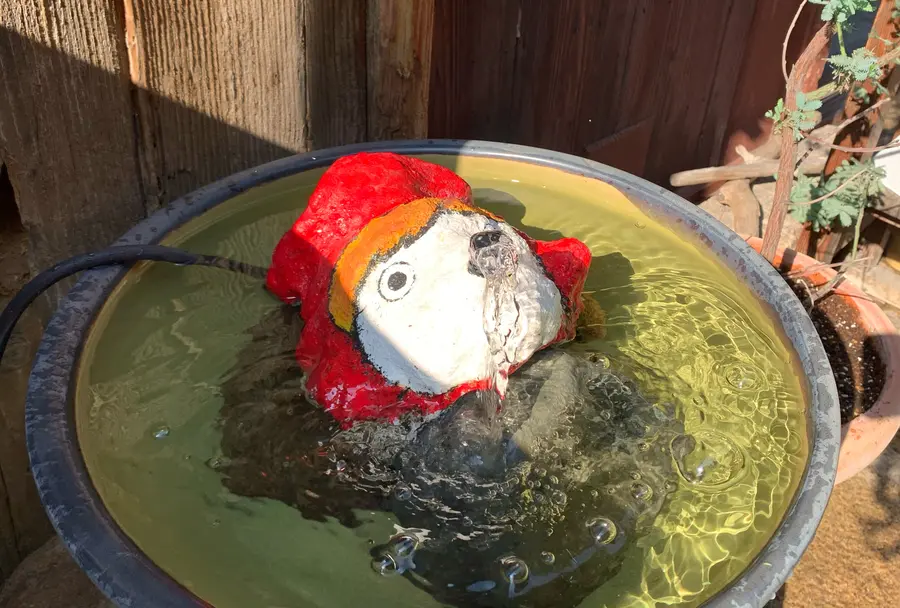
Story: One day, a five-year-old boy named Sosuke rescued a red fish girl trapped in a bottle. The child, named Ponyo, is the daughter of the goddess of the sea. Ponyo falls in love with Sosuke and wishes to become human. This fantasy work depicts the pure love and adventure of Ponyo and Sosuke.
In This Corner of the World (この世界の片隅に) – Kure City
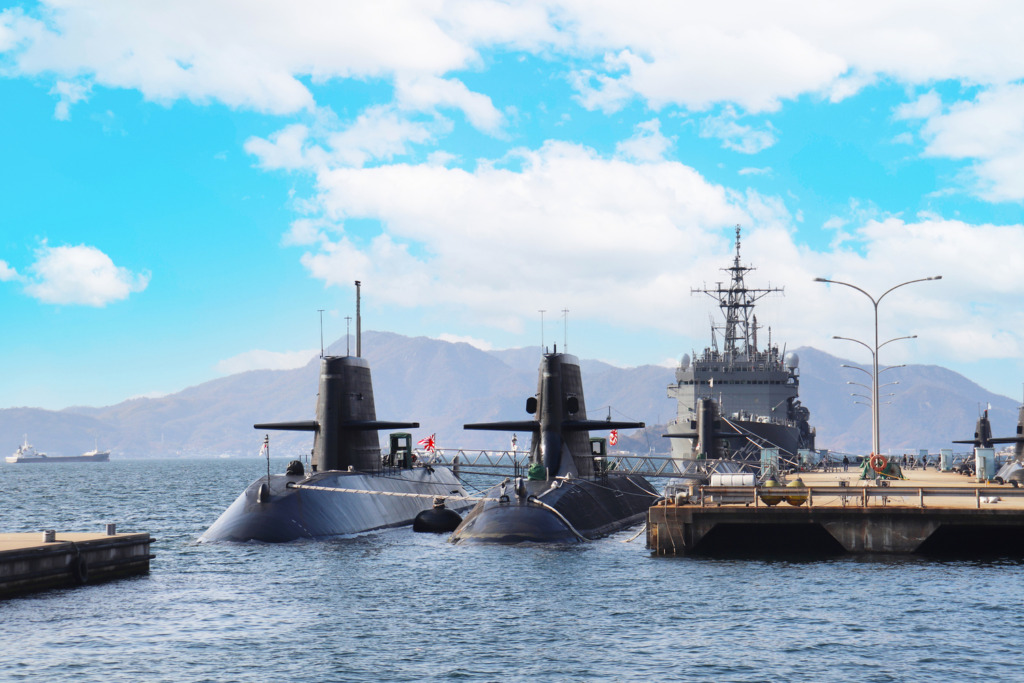
Kure City, which stretches across the western part of Hiroshima Prefecture, has long flourished as a port and naval town due to the presence of former naval factories. While the city is also famous as the home of the battleship Yamato, it is also recognized by many as the setting of the Japanese movie and drama “In This Corner of the World”. If you have seen the movie, please visit Kure where it was set.
Story: The main character is Suzu, an 18-year-old woman who marries from Hiroshima to the port city of Kure and begins a new life. The film depicts daily life in Kure during World War II. It is a town with beautiful sea and mountains that evoke a sense of nostalgia, and a deep history.
A Letter to Momo (ももへの手紙 ) – Mitarai District, Kure City
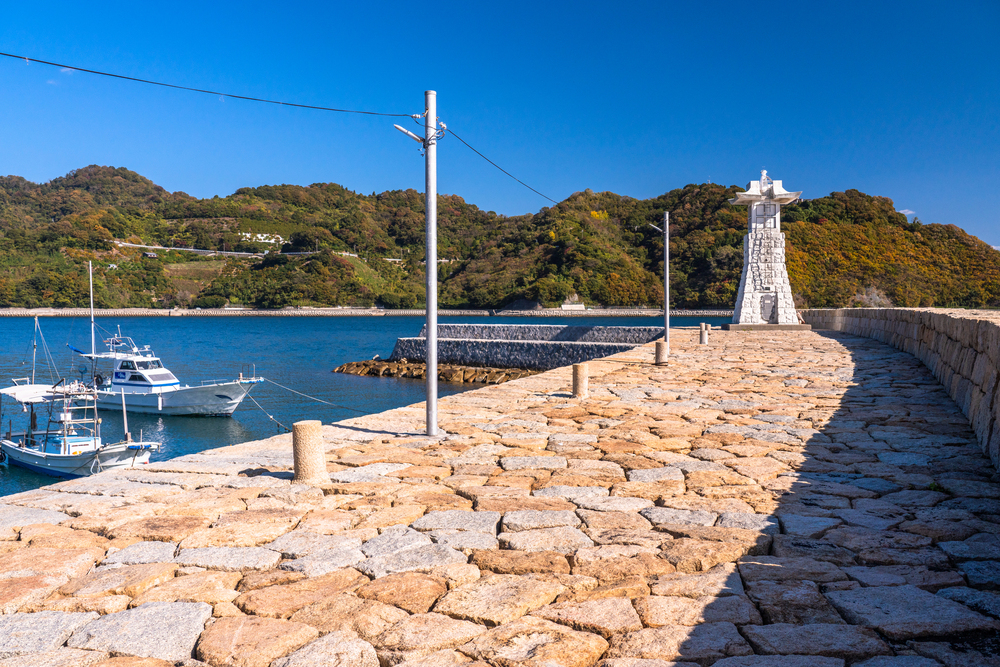
A remote island called Osaki-Shimozima Island floats southeast of Kure City, Hiroshima Prefecture. The island has a retro townscape with a deep history that makes it seem as if you have stepped back in time. The Mitarai district is located at the eastern end of Osaki-Shimozima Island, and was selected by the government in 1994 as an important preservation district for groups of traditional buildings. From the Edo period to the early Showa period, the area developed as a transit port for traffic on the Seto Inland Sea, and the elegant old streets still remain.
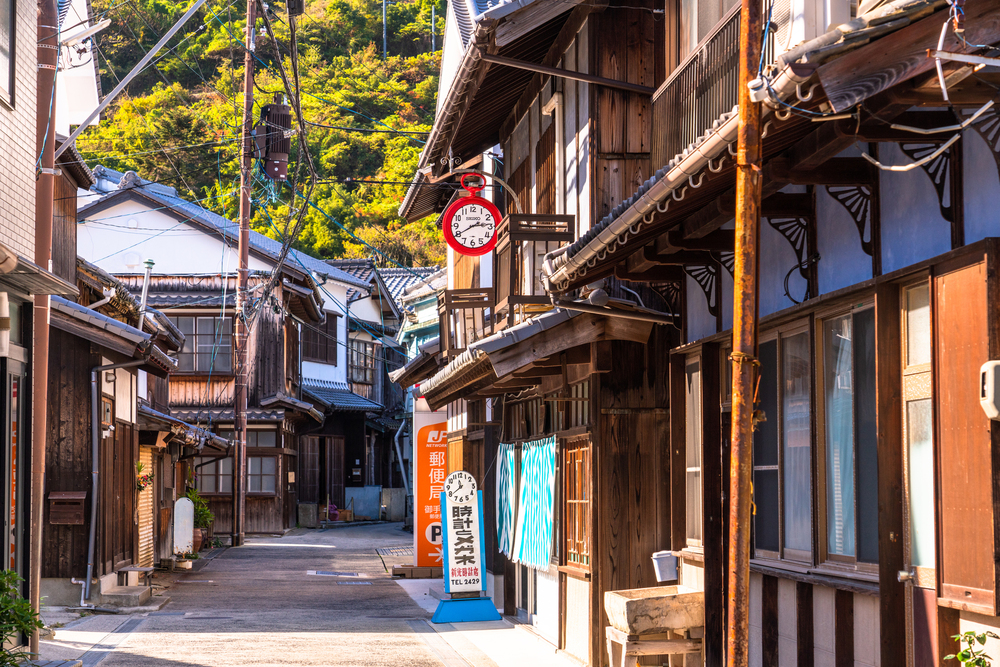
Story: A young girl, Momo, who regrets the separation from her father who died leaving behind a letter with only one word “To Momo”, moves with her mother to a remote island in the Seto Inland Sea. One day, Momo finds a used book in the attic, and from that day on, strange things begin to happen around her and strange goblins appear. This popular work is a touching story about facing loss and the importance of overcoming the past to move forward. Many of the places featured in the film are set in the Mitarai area, allowing visitors to experience the film’s atmosphere.
Enjoy Hiroshima-style Okonomiyaki
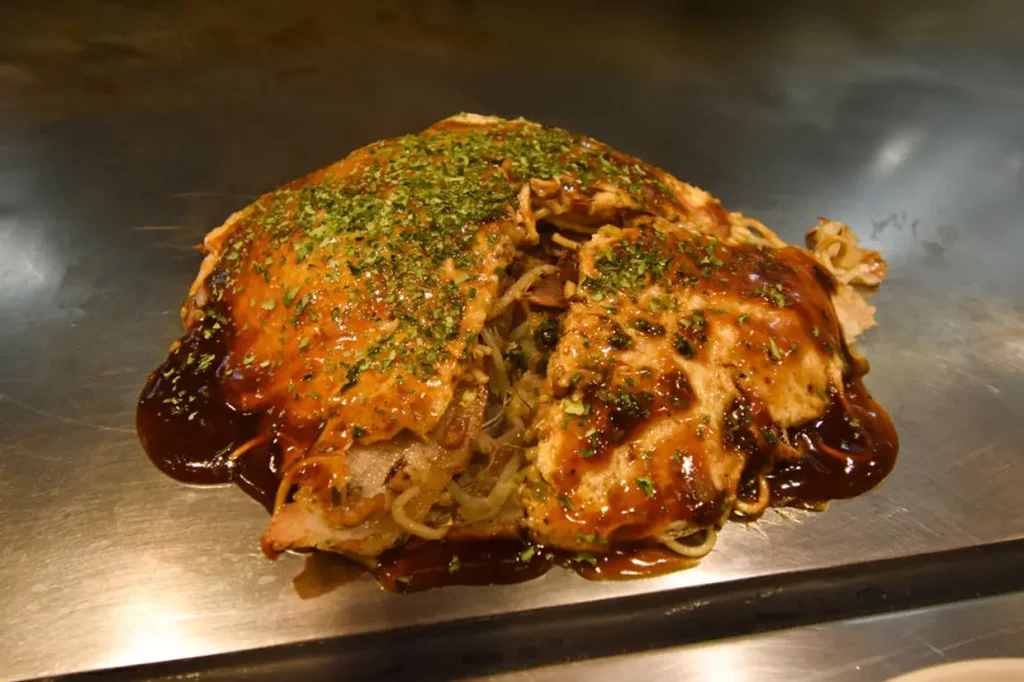
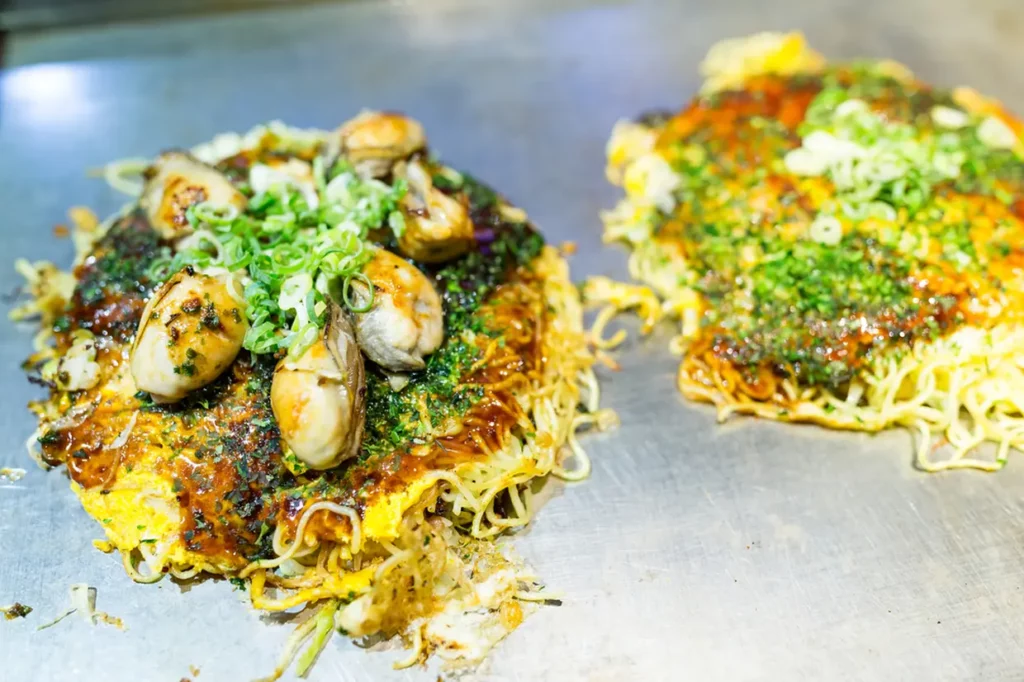
The most famous Hiroshima specialty is okonomiyaki, the local food of Hiroshima residents. Hiroshima Prefecture has the largest number of okonomiyaki restaurants per capita in Japan, and there is always at least one on every street, especially in the city center.
The crepe-like thin dough and okonomiyaki ingredients with noodles are the highlights of Hiroshima-style okonomiyaki. “Soba-niku-tama (そば肉玉),” or “Nikutama Soba (肉玉そば),” is a classic combination that combines yakisoba noodles, meat, egg, and dough with cabbage. Popular Hiroshima-style toppings include fried eggs, green onions, and seafood items such as squid tempura, squid, octopus, shrimp, and oysters. Finding your favorite restaurant and toppings is one way to enjoy this dish.
Hiroshima Okonomi Monogatari Ekimae Hiroba (ひろしまお好み物語 駅前ひろば)

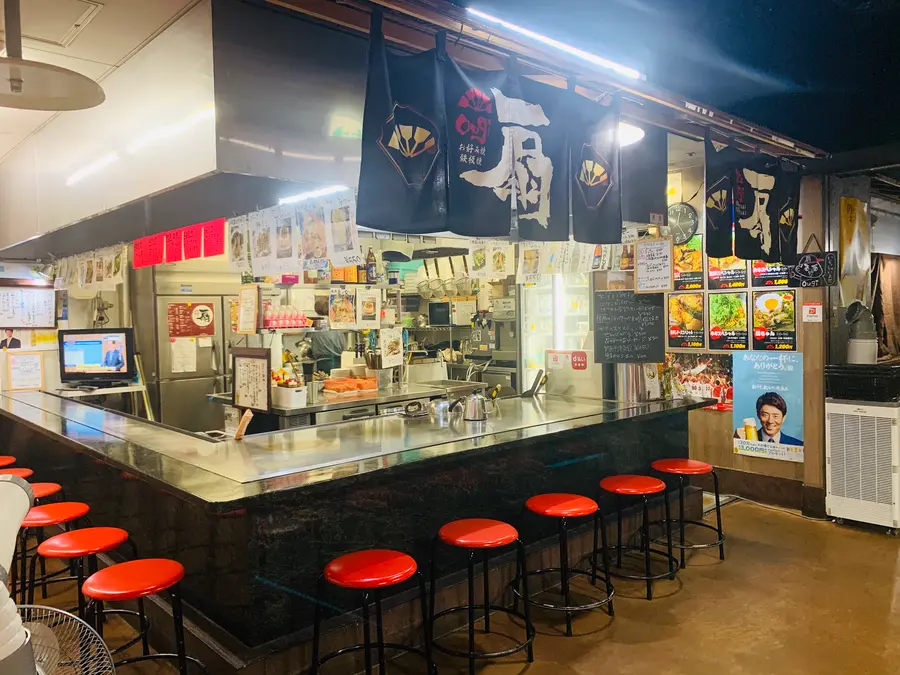
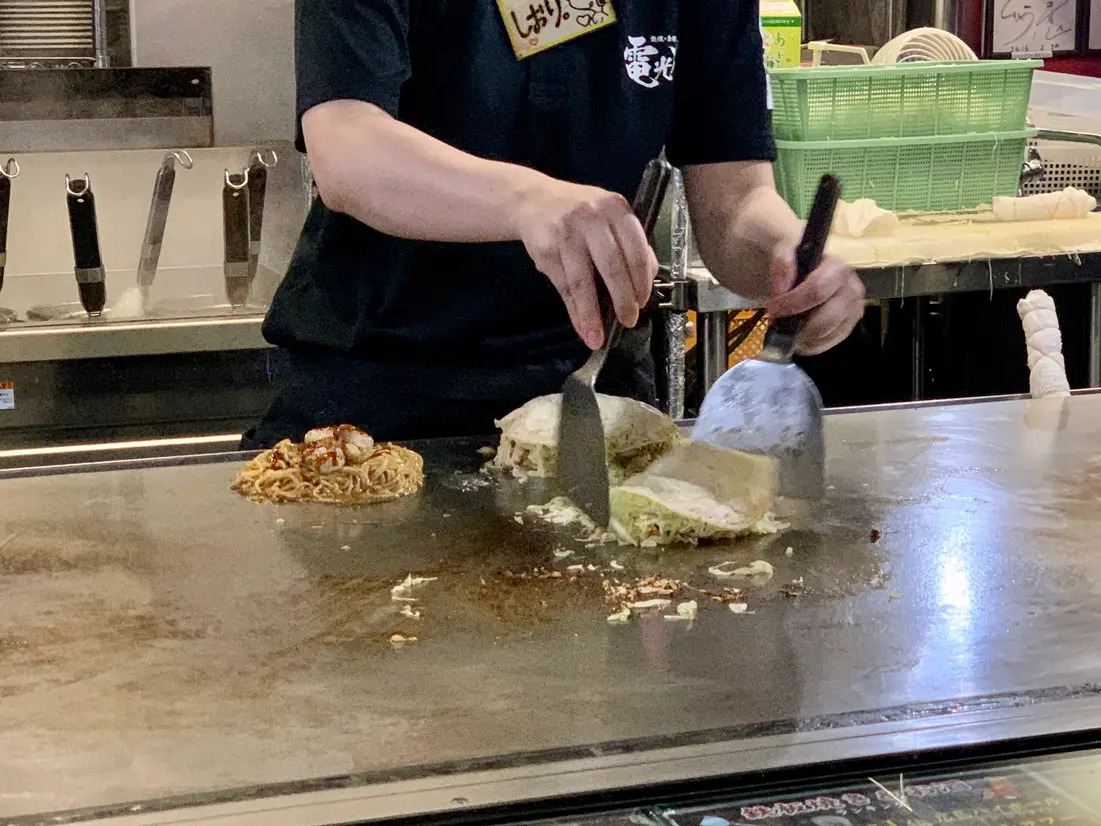

Hiroshima Okonomiyaki Monogatari Ekimae Hiroba, located a 3-minute walk from JR Hiroshima Station, is a true okonomiyaki theme park with about 15 okonomiyaki restaurants gathered in a building! Many of the restaurants are set up like food stalls with teppan griddles in front of the seats, so you can enjoy the okonomiyaki as it is being cooked right in front of you. We recommend you to visit this place near the station when you want to eat okonomiyaki!
Wood Egg Okonomiyaki Museum (Wood Egg お好み焼館)

Otafuku Sauce, an okonomiyaki sauce from Hiroshima, is indispensable for okonomiyaki, a specialty of Hiroshima. Visitors can not only enjoy eating okonomiyaki, but also learn about its history and culture. Visitors can also learn how to make delicious okonomiyaki in the kitchen studio.
2F: Okonomiyaki Museum – A museum where visitors can experience the history and culture of Okonomiyaki
3F: Kitchen Studio – A studio where people can learn how to make delicious okonomiyaki using hot plates
4F: Okonomiyaki Training Center – A floor used for support and training for those wishing to open an okonomiyaki restaurant
Annex: Teppan Okonomiyaki Cooking Studio – You can make okonomiyaki with an instructor using an professional griddle, teppan, like at an real okonomiyaki restaurant and eat freshly cooked okonomiyaki (course for groups)
Annex: Showroom – Souvenir store with original goods as well as okonomiyaki sauce
*Reservations are required for the experience. Check the official website for details!
Official website: https://www.otafuku.co.jp/laboratory/event/course2_eng.html
OKOSTA Hiroshima Station (オコスタ広島駅)
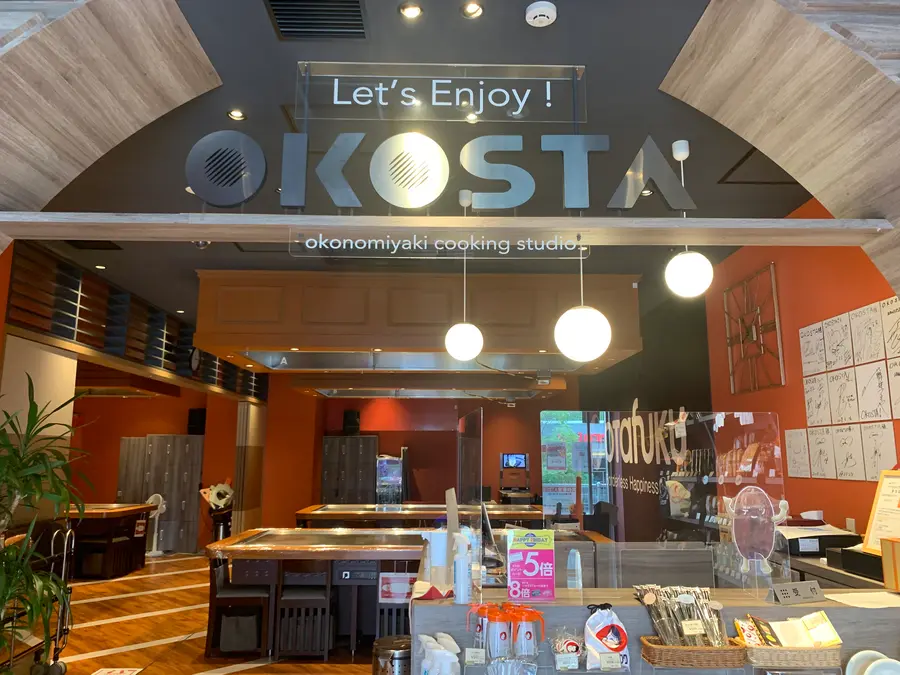
Wood Egg Okonomiyaki Museum is not the only cooking studio where you can experience making authentic Hiroshima okonomiyaki, there is also one at Hiroshima Station! OKOSTA Hiroshima Station is located in the shopping mall Ekie, directly connected to Hiroshima Station, so it is very accessible. We recommend this store as well. You can learn how to make okonomiyaki using a large teppan (griddle). Not only standard okonomiyaki, but also Vegetarian and Muslim friendly menu are available, so you can choose the type that suits you best.
*Reservations are required for the experience. Check the official website for details!
Official website: https://www.otafuku.co.jp/laboratory/event/okosta_eng.html
Island Hopping on the Shimanami Kaido
Hiroshima Prefecture faces the Seto Inland Sea and attracts visitors with its beautiful multi-island beauty. The region’s calm waters and numerous islands scattered throughout the area provide a rich landscape of natural beauty and harmony that makes for an unforgettable sight for visitors. Visitors can experience the charm of the Seto Inland Sea to the fullest by touring the beautiful islands accessible from Hiroshima.
Cycling the Shimanami Kaido
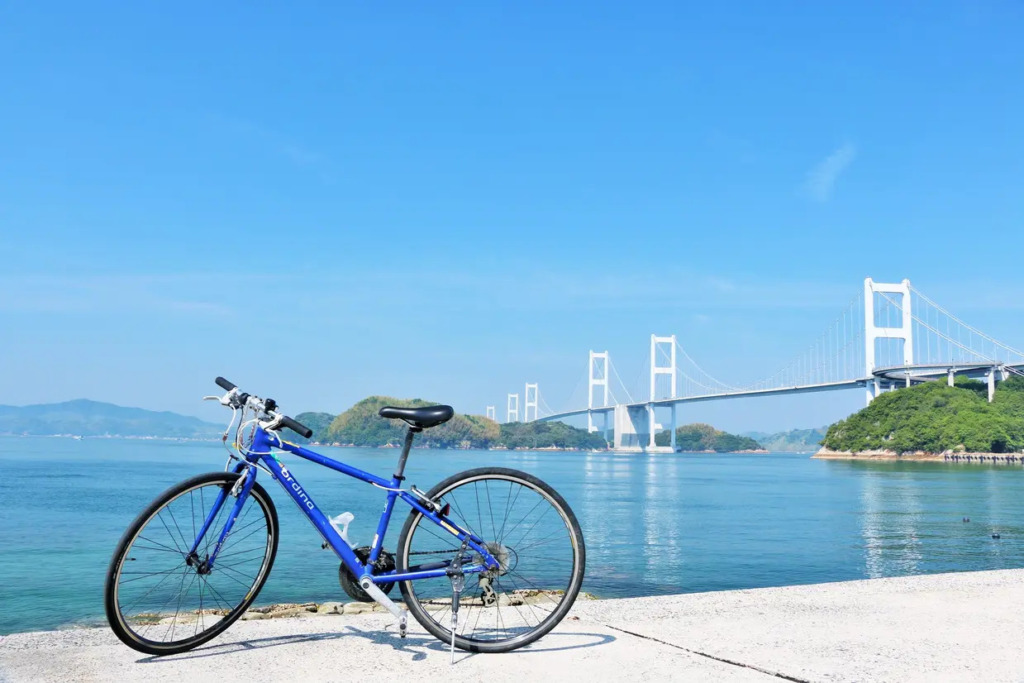
Nicknamed the “Shimanami Kaido,” this 60-km long motorway connects Onomichi City, Hiroshima Prefecture, and Imabari City, Ehime Prefecture. The bridge spans six islands, including Mukaishima, Innoshima, and Ikuchijima, and allows cyclists and drivers to enjoy the spectacular scenery of the sea and islands alongside. Each island has its own characteristics and attractions, and we recommend staying on one of the islands along the way and taking the time to fully enjoy the area from Onomichi to Imabari.
Especially in Onomichi, which is known as a mecca for cyclists and a convenient transportation hub, there are even cafes that offer cycle-through service so that cyclists can efficiently buy drinks and snacks.
3 islands along the Shimanami Kaido belonging to Hiroshima
Mukaishima Island(向島)

Mukaishima is the closest of the islands on the Shimanami Kaido to the Onomichi mainland, floating on the opposite shore to the south of Onomichi. From Onomichi Station, take the Ekimae Ferry in front of the station to Mukaishima, which takes about 5 minutes.
You can also cross by the Onomichi Ohashi Bridge, but the Onomichi Ohashi Bridge is not suitable for bicycles due to heavy traffic and narrow sidewalks. For safety reasons, we recommend taking a ferry when crossing from the mainland to Mukaishima by bicycle. It is possible to bring your bicycle on the ferry, and the fare is inexpensive.
Mukaishima has many attractions, including a local soda store and bakery that have long been favorites, stylish cafes and general stores near the beach, and a spectacular sunset view point.
Innoshima Island (因島)
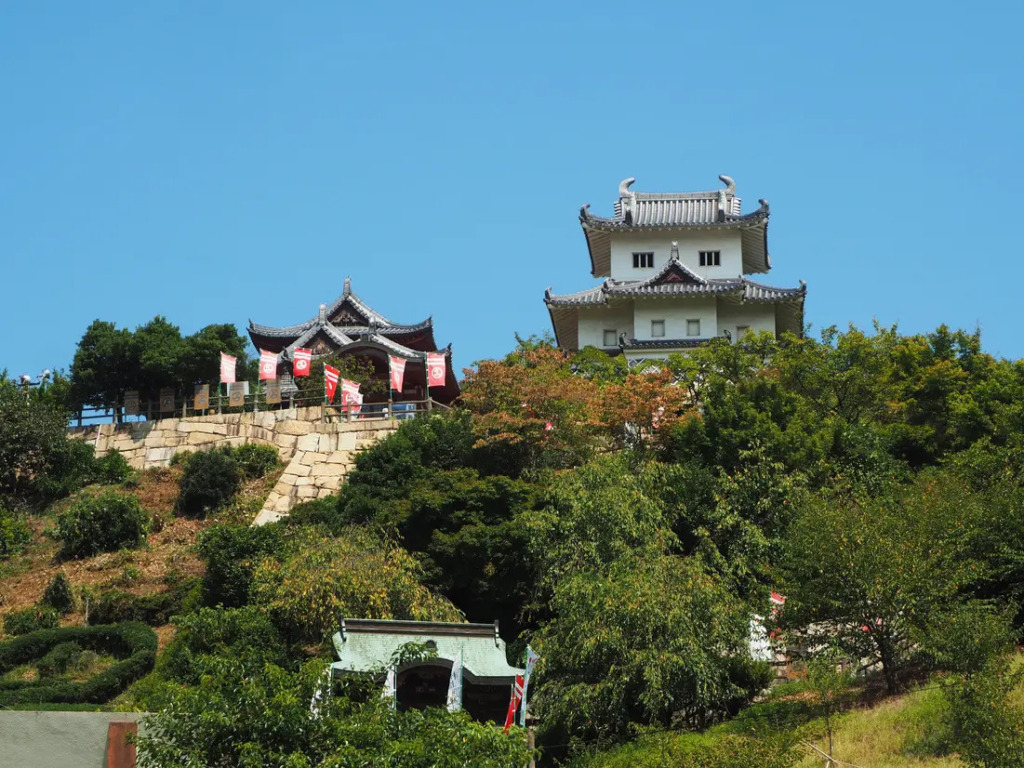
The island is blessed with a mild climate and rich traditions and culture, including the Murakami pirates. This is the second island counting from the Onomichi side. The Murakami pirates were a naval force active in the islands of the Seto Inland Sea from the Muromachi period (1336-1573) to the Sengoku period (1336-1573). They were a group that set up barrier posts at key points on the sea, dispatched pilots, provided maritime security, and engaged in other activities to protect the safety of the sea. Innoshima Island was their headquarters, and their unique sea castle still remains on the island today. The Shimanami Kaido area is dotted with places associated with the Murakami pirates, and those who are interested in this area are recommended to visit them.
It is also famous for shipbuilding, chrysanthemum cultivation, and the cultivation of citrus fruits such as hassaku, which originated on the island.
Ikuchijima Island (生口島)
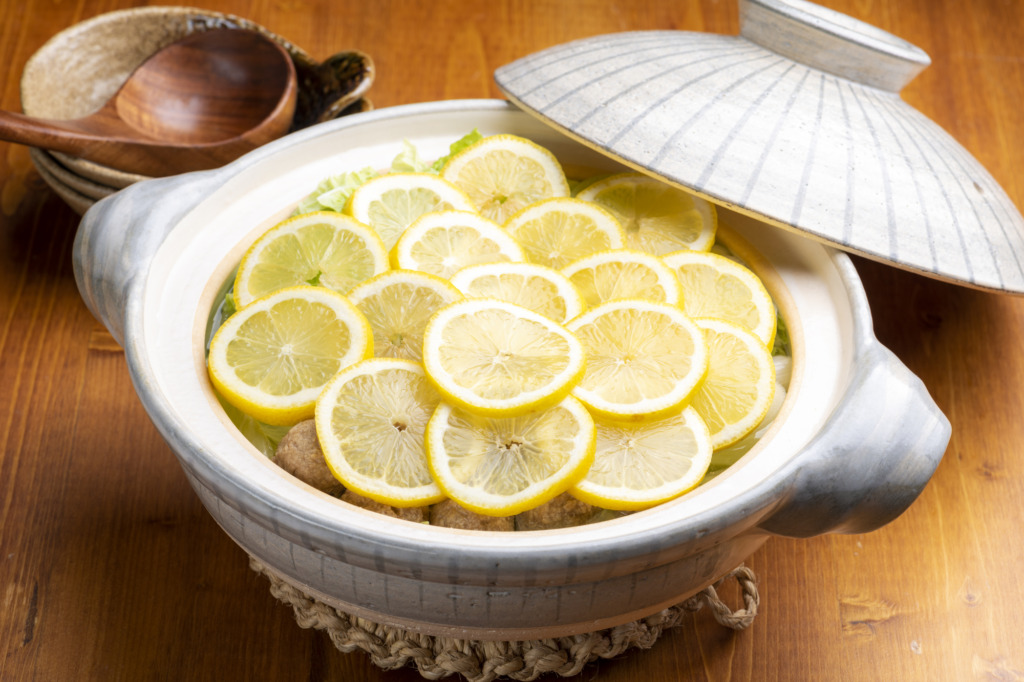
Ikuchijima Island is the third island counting from Onomichi side. Ikuchishima is famous as an island of art, and there are many spots rich in art. Many people from Japan and abroad come to the island to enjoy the art spots on the island. Especially popular are the Hirayama Ikuo Museum of Art, which introduces the achievements of Ikuo Hirayama, a Japanese painter who are from Ikuchijima, the Kosanji Museum, and Miraishin no Oka.
For those who want to make a short trip and enjoy the spectacular scenery, a drive along the Shimanami Kaido is also recommended!

The Shimanami Kaido is a mecca for cyclists, but if you want to make the trip in a short time, make it a road trip. If you carefully select sightseeing spots, you can visit them in half a day or a full day. There are several places to rent a car around Onomichi Station, the starting and ending point of the Shimanami Kaido, so renting a car is one way to go.
The islands of the Seto Inland Sea, rich in sea and nature, offer many spots with spectacular views, but many of them are located on high ground or in the mountains and are often too physically demanding for cyclists. If you are traveling to enjoy the spectacular scenery to the fullest, consider traveling by car instead of cycling!
Meet Wild Rabbits on Okunoshima Island
Hiroshima Prefecture, which boasts the beauty of its many islands, has many unique and attractive islands besides those on the Shimanami Kaido. We introduce Okunoshima island, one of the best of these islands.
Okunoshima Island (大久野島)

Accessible by boat from Tadanoumi Port in Takehara City in about 15 minutes, Okunoshima is a small island with a circumference of about 4 km. Famous as a rabbit island where wild rabbits live, many tourists visit the island in search of the adorable rabbits.
On the other hand, Okunoshima was once used as a base for the production of chemical weapons used in warfare, and poison gas was also manufactured there in the past. There are also historical facilities on the island that emphasize the tragedy of war and the preciousness of life. Please spend a relaxing time while interacting with the rabbits and visit the spots where you can learn about the history of the island and Japan.
Watch Baseball game at Mazda Stadium
Mazda Zoom-Zoom Stadium Hiroshima (Mazda Zoom-Zoom スタジアム広島)
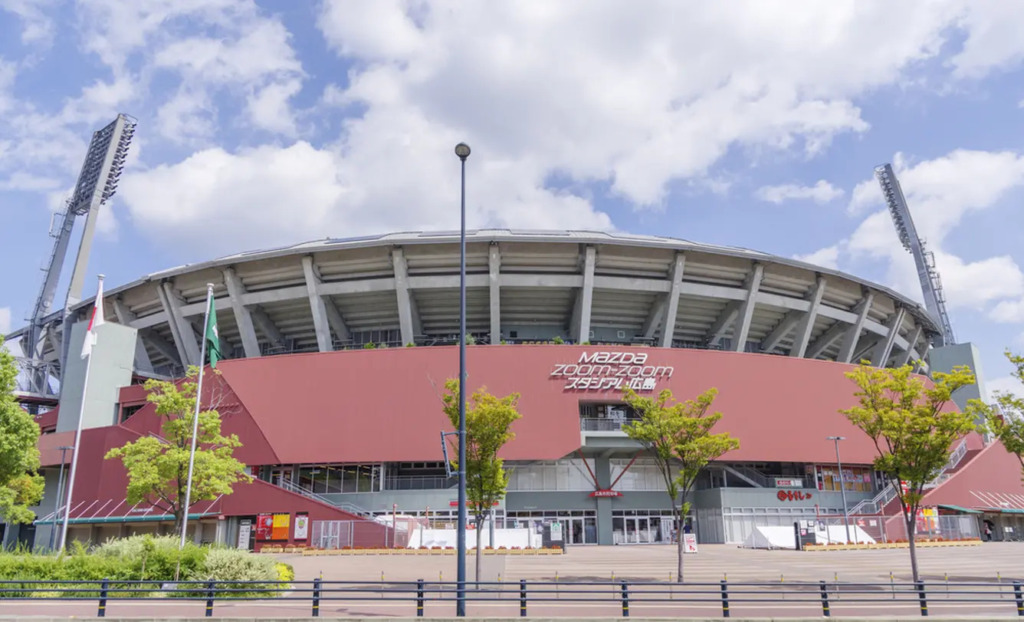
This stadium, home of the Hiroshima Toyo Carp, Japan’s professional baseball team, is crowded with people watching baseball games. The enjoyment of watching a baseball game is different from that of conventional baseball games, and the key is in how you choose your seats.
There are many variations of spectator seats, from seats where everyone can enjoy a BBQ or party, to seats for two that allow you to watch the game while lying down, and even seats that are tatami mat-style. The “sand-covered seats,” which are said to be the best seats, are at the same height as the ground and allow you to see the players up close and personal. Helmets for spectators are also available. They are also the only seats where you are likely to get high-fives and autographs from the players before and after the game, making them a very popular and expensive type of seating that sells out quickly.

In addition to the seats, one of the most enjoyable aspects of watching a baseball game is the gourmet food. There is a wide variety of gourmet foods that can only be enjoyed here, such as desserts produced by Hiroshima Carp players, and boxed lunches made in collaboration with the team.
